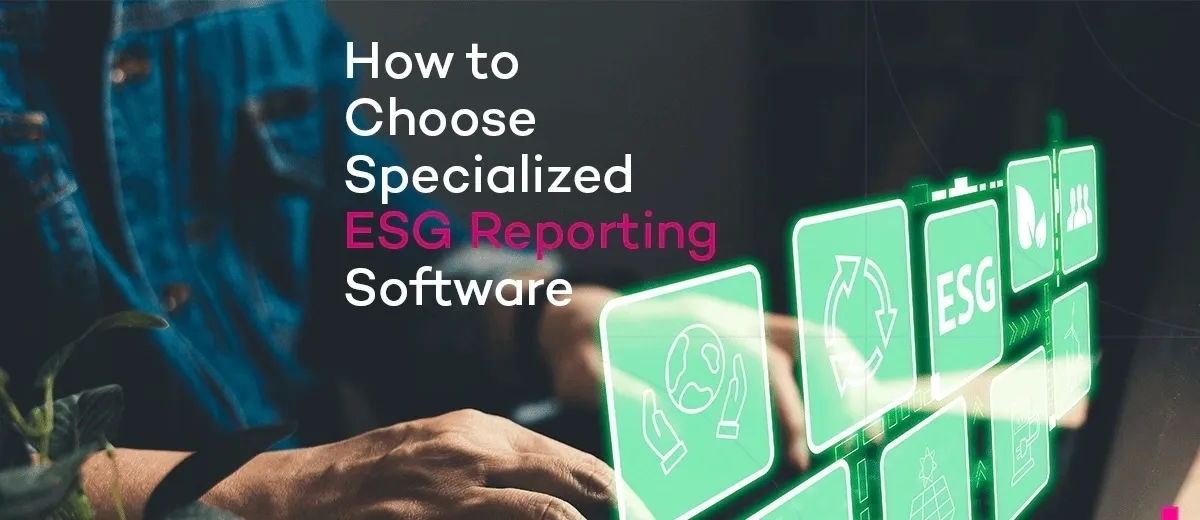
As companies increasingly recognize the importance of Environmental, Social, and Governance (ESG) considerations, the need for effective ESG software becomes paramount. From reducing carbon footprints to ensuring ethical labor practices, the ESG framework encompasses diverse factors. When evaluating digital solutions for ESG management, it’s crucial to consider a comprehensive set of criteria to ensure that the chosen software aligns with the unique needs of the organization.
Key Criteria for Choosing ESG Software:
1. Comprehensive Data Management
– Ensure the software can handle a wide range of ESG data, including environmental impact, social responsibility, and governance metrics.
– Look for a system that allows for data consolidation, validation, and storage in a centralized repository.
2. Scalability
– Assess the scalability of the software to accommodate the growth of your organization and evolving ESG reporting requirements.
– Consider whether the software can handle increasing volumes of data and users.
3. Customization and Flexibility
– Choose software that is customizable to align with your organization’s specific ESG goals and reporting frameworks.
– Ensure flexibility in adapting to changing regulations and industry standards.
4. Integration Capabilities
– Determine if the software can integrate seamlessly with existing systems, such as ERP (Enterprise Resource Planning) and CRM (Customer Relationship Management) systems.
– Integration with external data sources and APIs is essential for comprehensive ESG reporting.
5. User-Friendly Interface
– Prioritize software with an intuitive and user-friendly interface to facilitate data input, analysis, and reporting.
– Accessibility and ease of use are critical for engaging stakeholders across various departments.
6. Data Accuracy and Quality
– Verify the software’s ability to ensure data accuracy and integrity through validation checks and data quality controls.
– Accurate data is essential for credible ESG reporting and decision-making.
7. Reporting Capabilities
– Evaluate the software’s reporting features, including the ability to generate standardized ESG reports and customizable dashboards.
– Look for features that support various reporting frameworks, such as GRI (Global Reporting Initiative) or SASB (Sustainability Accounting Standards Board).
8. Audit and Compliance Tools
– Consider whether the software provides tools for internal and external audits, ensuring compliance with regulatory requirements and industry standards.
– Features such as audit trails and version control contribute to data transparency and accountability.
9. Benchmarking and Performance Tracking
– Assess the software’s ability to benchmark your organization’s ESG performance against industry peers and standards.
– Monitoring key performance indicators (KPIs) and tracking progress over time is crucial for continuous improvement.
10. Data Security and Privacy
– Prioritize software that complies with data security and privacy regulations.
– Evaluate the software’s encryption, access controls, and data protection measures to safeguard sensitive ESG information.
11.Training and Support
– Ensure that the software vendor provides comprehensive training resources and ongoing support.
– Availability of documentation, tutorials, and responsive customer support is essential for a smooth implementation and usage experience.
12. Repository for ESG Templates and Checklists
– Verify that the software provides a repository for ESG templates and checklists, facilitating standardized and efficient data collection and reporting.
13. Risk Assessment
– Evaluate the software’s ability to conduct comprehensive risk assessments, identifying potential ESG-related risks and providing tools for mitigation.
14. ESG Monitoring
– Ensure that the software offers real-time ESG monitoring capabilities, allowing organizations to stay proactive in addressing emerging sustainability challenges.
15. Incident Management
– Look for features related to incident management, enabling organizations to respond effectively to ESG-related incidents and crises.
16. Collaborative Tools
– Look for collaborative tools that enable effective teamwork and communication among individuals involved in ESG initiatives within the organization.
17. Data Visualization
– Ensure the presence of data visualization tools for presenting ESG information in a clear and understandable format, aiding in communication with stakeholders.
18. Stakeholder Engagement
– Evaluate features that support stakeholder engagement, fostering transparency and communication with investors, employees, and other stakeholders.
19. Mobile Accessibility
– Consider the software’s mobile accessibility, ensuring that stakeholders can access and contribute to ESG data and initiatives from anywhere.
Selecting the right ESG software requires a careful examination of various criteria to ensure that it aligns with the multifaceted nature of the ESG framework. From data security to stakeholder engagement, each criterion plays a crucial role in establishing a robust ESG management system that not only meets regulatory requirements but also contributes to the organization’s sustainability goals. By considering these essential factors, companies can make informed decisions that support their journey toward a more sustainable and responsible future.







